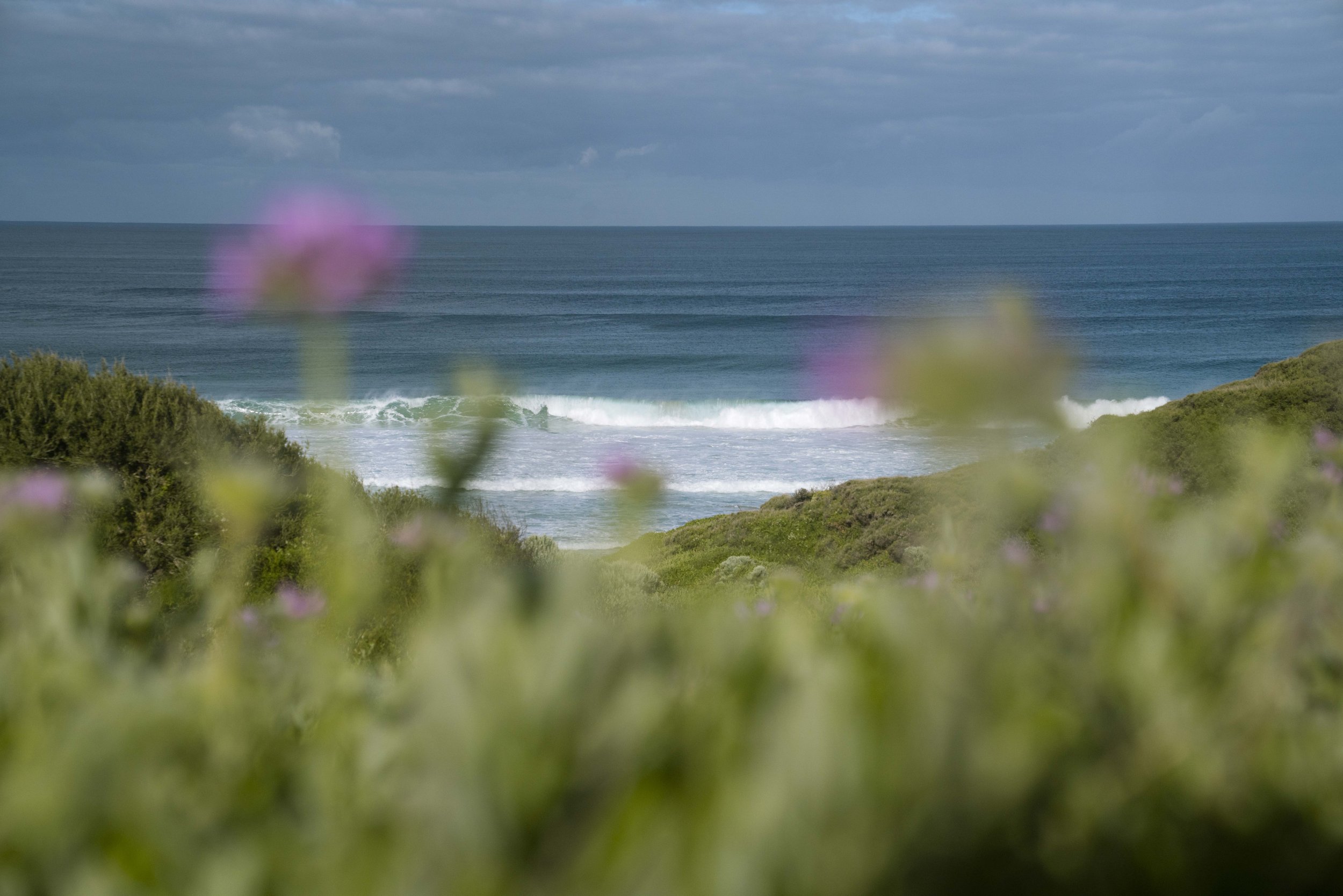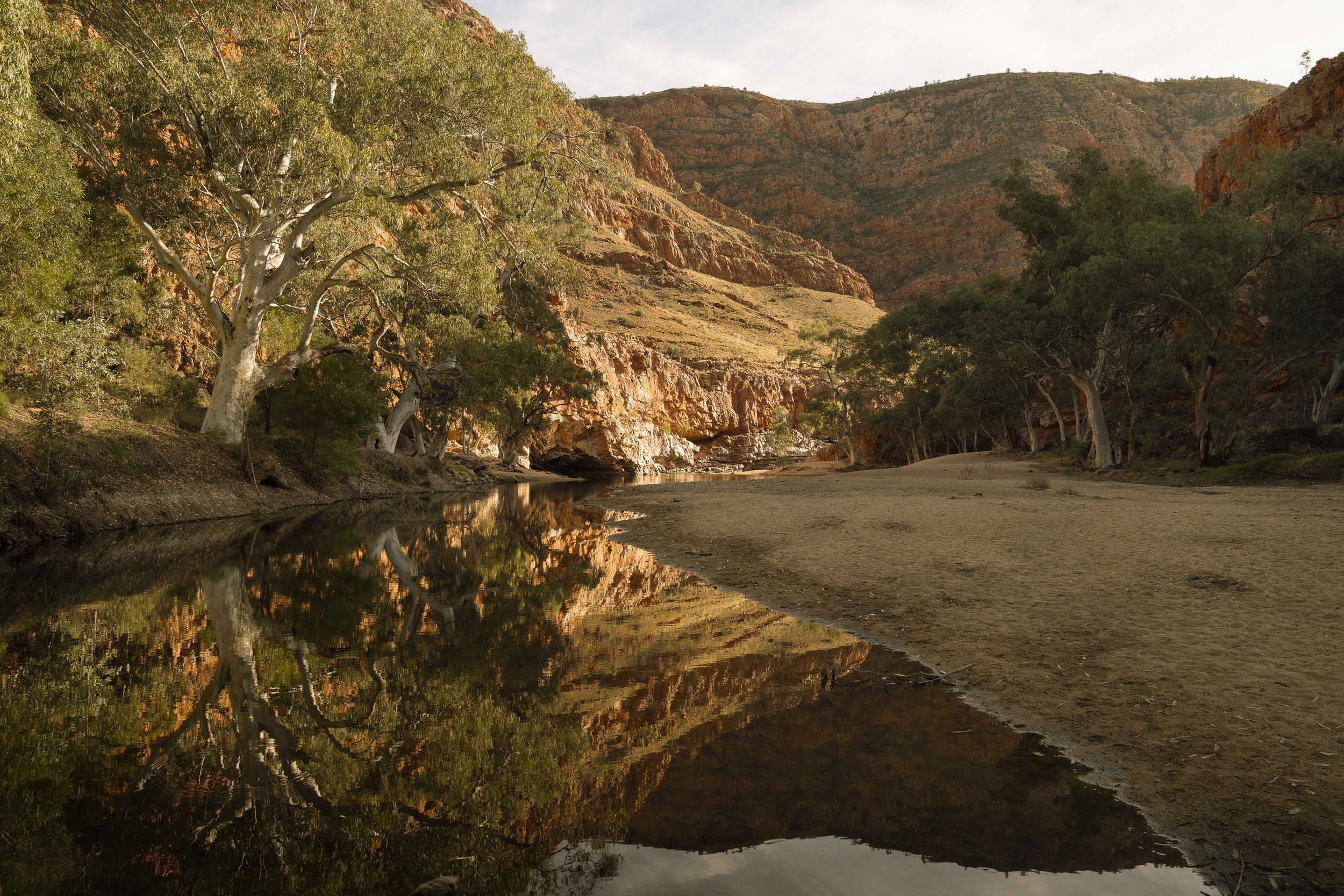Cover Photographer - Louise Coghill
We’re introducing you to Australia magazine cover photographer Louise Coghill, who hiked the Cape to Cape and Larapinta Trail for the issue, and mused on her journey to Karijini National Park. You can see more of Louise’s work here - and order a copy of the Australia mag here.
- When did your journey as a photographer begin?
I picked up a camera properly for the first time when I was 15, borrowing my fathers Nikon while we were living in Zambia. I used it as a way to explore the strange place we were in; it helped push me out of my comfort zone, and also created a comfort zone of its own. Having a filter to view the world through allowed me to explore further. I went on to study film and TV, wanting to make movies, and took a class in photography where I learnt the basics. I didn’t love the class though and I quit pretty quickly. The assignments felt so sterile in comparison to film and TV. Photography only re-entered my life when I moved to a sleepy little town in Far North Queensland where there was no film industry. I was a lonely young adult and photography became a tool for me to head off on little solo adventures into nature.
- What do you love about taking photographs?
Photography has helped me live a more adventurous and spontaneous life. It pushed me to book tickets abroad to find places and stories to photograph. As I began journeying further afield and travelling through Europe and Asia photography helped grow my comfort zone. When I was lonely on my solo journeys my camera would support me. When I was feeling out of my depth it felt ok because I was going to take a nice photo. I love the process as much as the final product.
It was a way to share my journey, even if I was there on my own at the time. I would capture it knowing it would go online and my friends and family would comment and enjoy it with me. Sharing the moments and stories, bringing my adventures back for other people to experience without the smelly clothes and sore feet and thousands of kilometres of hiking required, is incredibly special to me.
- What is your favourite thing to photograph?
I love telling the stories of my journey and of the places I’m exploring. Capturing the epic images alongside the reality of life on the road. And I love trying to capture time. Whether its a quiet moment when a butterfly lands, the movement of water, the morning sun striking the Australian bush. I love capturing these fleeting moments, the ones most people don’t notice. In a world where we take 2.6 billion photographs daily, and have travelled to nearly every corner of the globe, it’s those little moments that feel special and worth capturing.
- You've embarked on quite a few hikes now - what makes this kind of experience such a wonderful thing to photograph?
It’s a slow way to move through the world, and it gives me time to take my camera out and capture the landscape and the journey, while still enjoying the world around me. There is no rush to get home, there’s no bus to catch. I just walk and snap. While I love the process of photography, at times it can be overwhelming, the need to capture the spaces I inhabit, the sunsets I witness. With hiking I get the space to enjoy it all, and not worry so much. I have to keep walking, so I have to give myself up to the landscape. Sometimes I’m walking through a beautiful space when the lighting is stunning. Other times I’m walking through the spectacular landscape in the midday sun, and I just leave the camera in my backpack and enjoy the view.
- What does the word 'home' mean to you?
My parents property up in Gidgegannup was always what I thought of as home. I would move from share house to share house, packing my stuff into storage every 6 months to a year and hitting the road again. But Gidgegannup was the one place I could let my roots grow, and not worry about them dying away when I travelled again. Mum and dad always kept them watered for me. Everywhere else home felt like an elusive concept. I didn’t feel at home on the road, but the various spaces I lived in, never fully felt like home either. My parents’ property burned down earlier this year and I had to redefine that space. I began putting my own roots down, growing plants and letting myself stay in one place. Now home is more easily defined as the places my loved ones are. It’s not attached to the spot but to the people within it.
My definition of home has changed how I travel too. I have a place and people to come back to now, so my adventures have become more defined. I don’t aimlessly journey for months on end. I know where I’m going and when I’m coming back. And it feels really good.
- Is Western Australia a good photography subject?
Western Australia was a difficult place to photograph when I was younger. I wanted the mountains and the loooong golden hour. Australia is incredibly sunny, so much of the day can be difficult to capture. The majority of the land is flat and sparse. The16 hour drive to Karijini, one of my favourite spots in WA, follows a straight road and the landscape changes so slowly it’s hard to notice. We have so many spectacular sights, but they feel so spaced out it takes great effort to find them.
It took exploring other countries and returning to this rich, diverse, spacious, ancient, red rock country to fully appreciate it. And to finally see what made this place so special. The wildflowers, the gum trees, the kookaburras, the far-reaching ocean. It was all so normal and unchanging in my childhood. In my adulthood I see how old this place is, and the countless stories the landscape has to tell.
- Is there a creative community in Western Australia?
Perth has an amazing creative community. I think because it’s so isolated out here, it’s led to a creative explosion. We can’t just easily flit off to other cities to get our fix so we’ve had to create a thriving community right here. We’re a growing city, so we’re a bit behind the rest of the world, but everything is so close knit. Everyone knows someone who knows someone. Plus Brett from Kath and Kim lives just up the road from me, so you know that says a lot about what a happening place Perth is.
- Can you tell us a little about the image on the cover of Lodestars Anthology Australia? Where was it taken and what was the day like?
I was hiking the Larapinta Trail through the Northern Territory. I had to carry 6 litres of water that day as there was no water for the next day and a half. I was walking slowly, trying to enjoy the day despite my heavy bag. I hit a hill and trudged up it. I was sheltered from the wind on the way up but the sun beat down relentlessly. I reached the saddle and put my bag down to have a rest before walking down the other side. The wind blew past me, cooling me down while I peeled an orange. The juice ran down my arms as I bit into it and the sugar gave me a needed hit. I sat for 15 minutes enjoying the view, loving the unexpected colour of purple that covered this landscape thanks to the Mulla Mulla plant endemic to semi-arid Australian landscapes. It was midday so I didn’t expect to be able to capture a nice image. Eventually I had to get my camera out and give it a shot, even though I knew it wouldn’t be worth it. The outback is made for midday photography though. The landscape comes alive beneath that bright and cloudless sky. With no high mountains there’s no intense shadows to worry about, and as I snapped it I knew it was an image I was really proud of. It was just so unexpected.
- What's the best piece of advice you've ever been given - when it comes to photography, life, anything really?
There was a poem on the back of my childhood homes bathroom door called ‘I would pick more daisies next time’. It was a poem I would read every day. It was a poem about not living a life of regret.
Here’s a little excerpt: “I’d make more mistakes next time. I would take fewer things seriously. I would take more chances. I would climb more mountains and swim more rivers. I would eat more ice cream and less beans. I would perhaps have more actual troubles, but I’d have fewer imaginary ones.”
I was thinking about it recently, how much that message has impacted my life. I’m really thankful that mum chose that poem.
- What would your younger self think of the work you're doing now?
My dreams have changed a lot over the years. I am living a life I never expected, one that has taught me so many amazing things. I know little Lou would be proud of the human she was going to become. And yet I know I gave up dreams and wishes to follow this path, I gave up my community and dreams of being a filmmaker to follow a more isolated creative path. One that is driven by travel. I have no regret but I don’t want to let the path of least resistance guide my life, and so I try to dip back into my younger dreams and make sure I’m still exploring them. Creating stories, illustrating, exploring other forms of creativity. And trying hard to find that community again after so long on the road.

















